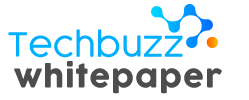How Data Governance Regulations and Standards Shape DocuSign’s Rigorous Security and Privacy Practices
Every e-signature provider seeks to keep confidential customer data secure throughout the e-signing process and ensure that the data remains accurate, complete, and consistently available to those authorised to access it. But what sets them all apart is their approach to data governance. DocuSign’s commitment to and significant ongoing investment toward protecting customer data extends to every operating environment across the DocuSign Agreement Cloud. In fact, information security and privacy are in our DNA and engrained in our people, processes, and technologies—globally. Our approach is simple: every employee is responsible for information security, including protecting: –DocuSign-owned information assets –Customer and partner information assets –The underlying technology infrastructure and the data generated, processed, and stored in DocuSign environments
This document details DocuSign’s commitment to delivering robust data governance through specific policies and capabilities, rooted in an understanding of laws, regulations, standards, and best practices.




